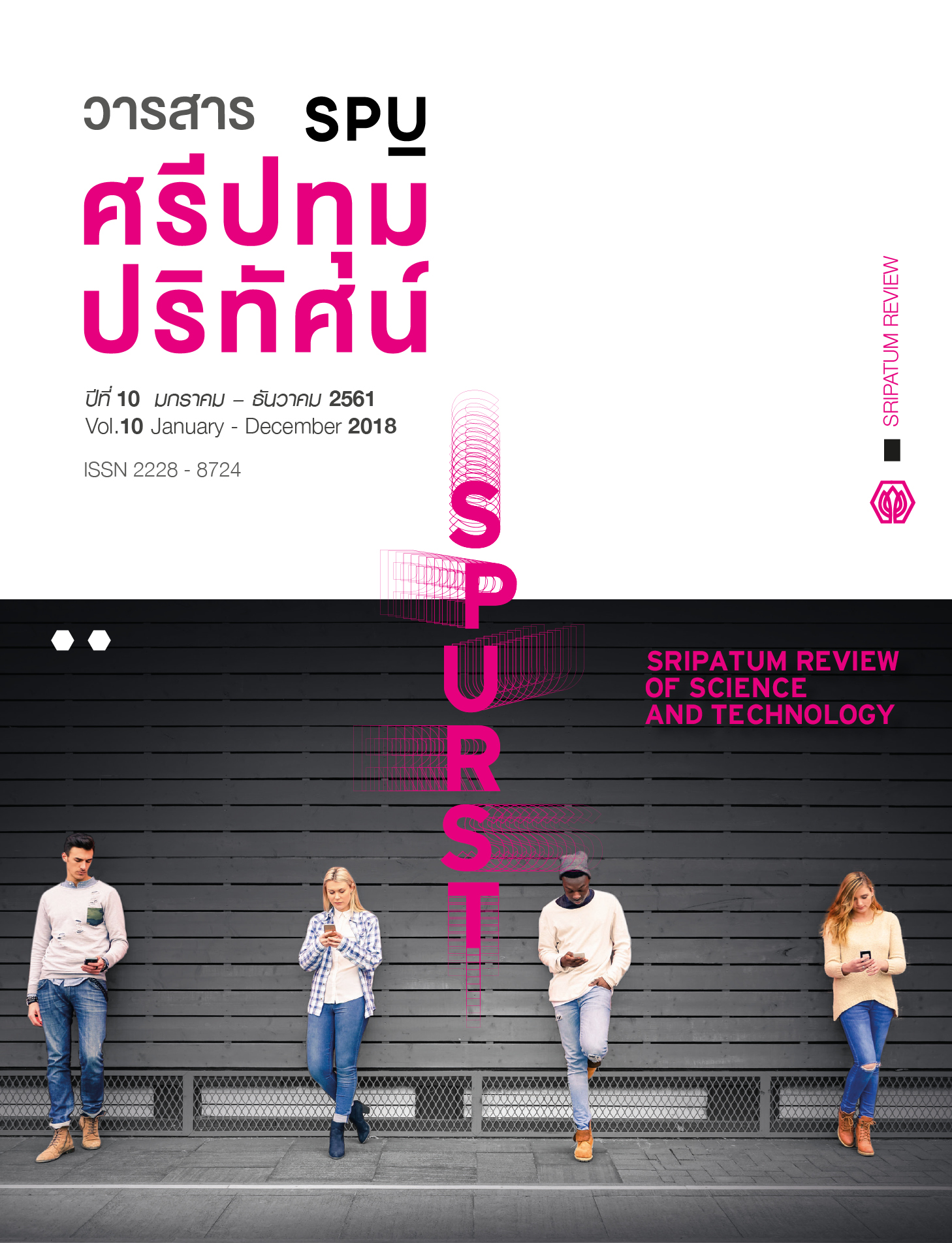Development of data analytics system of intelligent air bed for decreasing the bedsore symptom
Main Article Content
Abstract
Bedsores also called pressure ulcers is the cause of high mortality as this disease occurs in people in every age and gender group. Bedsores is an important problem for patients who are unable to care for themselves. The objective of this study was to develop an information transmission system to analyze bedsore information based on sleeping postures in patients as classified by 9 organs: behind head, left shoulder, right shoulder, left elbow, right elbow, left buttock, right buttock, left heel, and right heel. The Internet of Things (IoT) technology was applied with Message Queuing Telemetry Transport Protocol (MQTT) to receive and send information from air bed to the relational database system. Data were analyzed by the decision tree method, a tool to support decision and analysis. The collapse and inflation of air bed surface was based on to reduce pressures and this function is similar to car tire inflating with standard measure, air pressure in pounds per square inch (PSI). The results were shown in graphical presentation and the message was presented on screen.
Article Details
References
Wachira, k., Sarinpas, J., Phaiwan, M., Chirot, C., Surachai, T. (2016). Smart Air bed to reduce the Bedsore. Bangkok: Sripatum University. (in Thai)
Rujira, T. (2011). Decision Support System for Selection the Mobile Internet Package Using Decision Tree. Nonthaburi: Rajapruk University. (in Thai)
Sangwan, T., Sasithon P. (2014). Development of Clinical Practice Guidelines for Pressure Sore Prevention Among Male Patient Surgical Ward, Lamphun Hospital. Lanna Public Health Journal, 3, 173-182. (in Thai)
Suvit, P., Panwit,T. (2016). Internet of Things for Human Healthcare Services and Data Analytics with Hadoop. Pathumwan Academic Journal, 15, 61-72. (in Thai)
MethiNut, K. (2014). Development of smart home monitoring and alert system using Internet of things technology. Chonburi: Burapha university. (in Thai)
Kaur, D. (2015). Review of decision tree data mining algorithms: ID3 AND C4.5. Proceedings of International Conference on Information Technology and Computer Science, 2015, BCET Gurdaspur of India, 5-8.
Kortuem, G. and Kawsar, F. (2009). Smart objects as building blocks for the internet of things. United Kingdom: Lancaster University.
IBM. (2016). MQ Telemetry Transport (MQTT) V3.1 Protocol Specification. Retrieved May 12 2017, from: https://www.ibm.com/developerworks/library/iot-mqtt-why-good-for-iot/index.html
Quinlan, J.R. (2007). Induction of DecisionTrees Machine Learning. Sydney: New South Wales Institute of Technology.
Yousefi, R., Ostadabbas, S., Faezipour, M., Nourani, M. Ng, and Tamil, V.L. 2011. A Smart Bed Platform for Monitoring and Ulcer Prevention. Dallas: Texas University.


